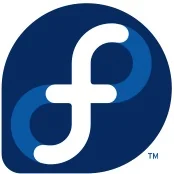Fedora 16 Features With Desktop, Virtualization, Etc

As talked about already, Fedora 16 may use the Btrfs file-system by default, but according to the feature list Wiki page its status is currently at 0%. Other features include automatic multi-seat support, Chrony becoming the default NTP client, firewalld will be the default network firewall solution, and Fedora will finally switch to using the GRUB2 boot-loader rather than legacy GRUB. Also going out the door in Fedora will finally be the HAL daemon with everything being migrated over to UDisks, UPOwer, the UDEV library, etc. Fedora 15 switched over to systemd and with Fedora 16 they will finish up migrating SysVinit scripts over to systemd files.
For developers, Fedora 16 will finally include developer tools for the ADA language, the GCC Python plug-in will be integrated, and the Eclipse integrated development environment will be upgraded against Indigo. Additionally, the Glasgow Haskell Compiler will be updated as well as going to PERL 5.14.
When it comes to Fedora 16 in the cloud, it will introduce "Aeolus Conductor" as a web UI for managing and creating cloud instances. There will also be CloudFS in Verne as a "cloud ready" version of the GlusterFS file-system and Red Hat will be supporting CloudStack. There's also Condor Cloud as an IaaS cloud implementation using Condor and the Deltacloud API. In the virtualization world there will also be networking enhancements to the libvirt library. SPICE 0.10 will also be found in Fedora 16, which provides USB sharing between guests, audio volume messages between the guest and client, among other virtualization enhancements. Last but not least, there will be Xen Dom0 support, the virtualization sandbox tool, a virtual machine lock manager, and virt-manager guest inspection.
New packages will include Boost 1.47, Blender 1.47, GNOME 3.2, KDE Software Compilation 4.7, Sugar 0.94, open-source graphics driver stack updates, and the Linux 3.0/3.1 kernel.
Other Fedora 16 features will include USB network redirection, a unified problem reporting interface, using the EXT4 driver for EXT2/EXT3 file-systems, and trusted boot support.
The full list of features and more details regarding their status can be found via the Fedora Project Wiki. Look for Fedora 16 Alpha in just a few weeks, Fedora 16 Beta in September, and then the Fedora 16 final release a month later. Hopefully Verne will actually ship on time.
21 Comments

